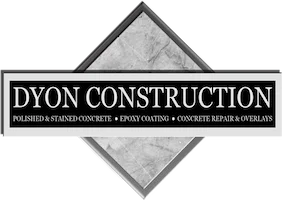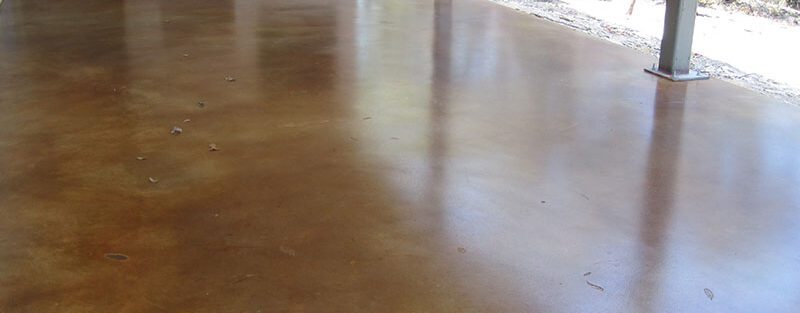Introduction
Concrete floors have evolved beyond their utilitarian roots to become a popular choice for modern interior design. Staining your concrete floors is an excellent way to enhance their aesthetic appeal while adding durability and character to your space. In this comprehensive guide, we’ll explore the benefits of concrete staining, different types of stains available, preparation and application processes, tips for achieving the best results, and how to maintain your stained concrete floors for long-lasting beauty.
Benefits of Concrete Staining
Staining your concrete floors offers a multitude of benefits that extend far beyond mere aesthetics.
Customizable Appearance
Concrete staining provides an unparalleled level of customization, allowing you to achieve a look that mimics the appearance of natural stone, wood, or even metallic surfaces. Whether you prefer the rustic charm of aged wood or the sleek elegance of polished marble, concrete staining can bring your vision to life with stunning accuracy.
Durability and Resistance
Stained concrete is highly durable and resistant to wear, making it an ideal flooring solution for high-traffic areas such as kitchens, living rooms, and commercial spaces. Unlike other flooring options that may show signs of wear and tear over time, stained concrete maintains its beauty and integrity even in the busiest environments. Its robust nature makes it resistant to scratches, scuffs, and stains, ensuring that your floors look pristine for years to come.
Low Maintenance
Moreover, stained concrete is exceptionally low maintenance, offering homeowners and business owners peace of mind. Regular sweeping and occasional mopping are typically all that’s needed to keep stained concrete floors looking their best. Unlike carpeting or hardwood floors that require specialized cleaning products and treatments, stained concrete is easy to clean and maintain, saving both time and money in the long run.
Improved Indoor Air Quality
Stained concrete floors can contribute to better indoor air quality by reducing the need for additional flooring materials that may harbor allergens. Unlike carpeting, which can trap dust, pet dander, and other allergens, stained concrete floors provide a smooth, non-porous surface that is inhospitable to allergens. This makes them an excellent choice for individuals with allergies or respiratory issues, as well as for environments where air quality is a concern.
Types of Concrete Stains
When it comes to types of concrete stains, there are two main categories:
Acid-Based Stains
Acid-based stains penetrate the concrete surface and chemically react with the minerals present to produce a one-of-a-kind, mottled appearance. These stains often provide rich, earthy tones and depth of color, creating a unique and organic look that can’t be replicated with other methods.
Water-Based Stains
On the other hand, water-based stains are non-reactive and offer more consistent and predictable color results. They come in a wide range of colors and shades, allowing for greater versatility and customization. Water-based stains are generally easier to work with and are a popular choice for DIY projects due to their user-friendly nature.
Whether you opt for the rich, variegated tones of acid-based stains or the consistent color options of water-based stains, concrete staining opens up a world of design possibilities for your floors, adding beauty, durability, and value to your space.
Preparation and Application Process
Proper preparation is crucial for achieving the best results when staining concrete floors. Begin by thoroughly cleaning the surface to remove dirt, grease, and other contaminants. Next, etch the concrete using an acid wash or mechanical grinder to open up the pores and ensure proper adhesion of the stain. Once the concrete is clean and prepped, apply the stain using a sprayer, brush, or roller, depending on the desired effect. Work in small sections, blending the stain as you go to avoid streaks or uneven color.
Tips for Achieving the Best Results
- Test the stain on a small, inconspicuous area of the floor to ensure it produces the desired color.
- Consider using multiple colors or layering stains to create depth and dimension.
- Work methodically and avoid letting the stain puddle or dry too quickly.
- Seal the stained concrete with a quality concrete sealer to protect the finish and enhance the color.
- Allow the stain to cure for the recommended time before walking or placing furniture on the surface.
Maintenance and Longevity
Proper maintenance is essential for preserving the beauty and longevity of your stained concrete floors. Regular sweeping and mopping with a neutral pH cleaner will help keep the surface clean and free of debris. Avoid using harsh chemicals or abrasive cleaners, as they can damage the sealer and dull the finish. Periodically, reapply a concrete sealer to protect the surface from wear and tear and maintain its vibrant color. With proper care, stained concrete floors can last for many years while retaining their beauty and durability.
Conclusion
Staining your concrete floors is a cost-effective way to add style, durability, and personality to your space. Whether you’re looking to achieve a rustic, industrial look or a sleek, modern finish, concrete staining offers endless possibilities. By understanding the benefits of concrete staining, choosing the right stain for your project, properly preparing and applying the stain, and following maintenance best practices, you can enjoy beautiful, long-lasting results that enhance your home or business for years to come.

